Here’s a short video that perhaps captures the mystery of the world of Aia, which is the setting for the Bitterbynde Trilogy. It was originally made as a trailer for the audiobook of The Ill-Made Mute. I hope you enjoy it.
Category Archives: Inspirations
The Northern Threat
Border reivers.
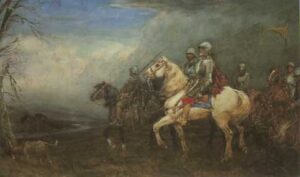
I was rereading one of my own books the other day, (because it’s being made into an audio-book – hurrah!), and I was reminded of the concept of “dangerous northern dwellers, who are always threatening to surge down south and cause mayhem”.
I started writing THE ILL-MADE MUTE twelve years before it was published, because it took me four years to write each book of the BITTERBYNDE trilogy. In other words, I started around the year 1988. By that stage of my life, the concept of perilous northern raiders was ingrained into my psyche. Which is how they got written into the book.
This is because I was raised on a diet of books that included a great deal of British history, such as the wonderful books of Rosemary Sutcliff and Andre Norton. And throughout British history runs a theme of Dark Forces in the North, threatening the more civilised forces in the south.
Even Mrs Gaskell’s classic NORTH AND SOUTH hints at this. In it, Northerners are typically “hard”, and live in a hellish landscape, while Southerners are soft and live amongst gardens. When I started writing my trilogy it seemed natural to me to invent a world in which trouble was brewing at the northern end. The idea of a wall between north and south also seemed somehow natural, and rather exciting. I’m guessing that’s due to the ghost of Hadrian’s Wall haunting my mind, when I was a child.
Throughout much of British history, there have been border reivers. They were raiders and outlaws along the Anglo-Scottish border from the 13th to the 16th century, who took advantage of a fraught and explosive border region over those centuries. Their feats have blended into folklore. “There were reiver families and clans on both sides of the border – the English reivers would raid into Scotland and vice versa.” [Wikipedia]
Probably, many of the books I read as a child were written by southerners who might have had a biased impression of the northerners, which is why I ended up with that impression.
Incongruously, my reading left Young Me with the impression that “north is cold”. “Cold north wind” is a phrase that sounds right to my ears, despite the fact that where I live, the north wind in summer comes roaring with the breath of a furnace.
Combined with the Christmas cards of my childhood, that depicted snow and robins, this made for mentally living in two worlds simultaneously. Which is, surprisingly, a boon for a writer.
The Churchyard Yarrow
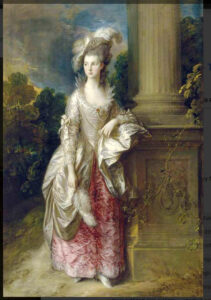
Compliments of the Season!
As mentioned in my last post, Ford Street Publishing is producing a fantasy anthology in March 2024, and my story “The Churchyard Yarrow” is included. The book’s title is “Borderlands: Tales from the Edge — a new anthology.”
Let me tell you something about the background of my short story. It’s an excerpt from a work I’ve recently finished writing. The novel’s title is THE KING’S SHILLING, and it is Book #1 in a new trilogy called MADIGAN’S LEAP.
I began this work some while ago, and it was originally intended to be a short story.
I set it aside for what I thought was a year or two, but when I eventually looked at it again this year, my word processing software informed me that I had typed the first word in 2008. Even back then, the short story was taking on larger dimensions, because I had got as far as the middle of what is now Book #2 before setting it aside.
I recommenced the project, accepted the inevitable reality that it was expanding into three volumes, and completed the trilogy.
Yarrow

Achillea millefolium is commonly known as yarrow. Other common names include old man’s pepper, devil’s nettle, sanguinary, milfoil, soldier’s woundwort, and thousand seal.
You know that when a plant has many common names, it’s one that people find useful.
From Wikipedia: “In antiquity, the plant was known as herba militaris for its use in stanching the flow of blood from wounds. Other names implying its historical use in healing—particularly in the military—include bloodwort, knight’s milfoil, staunchweed, and, from its use in the United States Civil War, soldier’s woundwort.” [Wikipedia: Achillea millefolium]
It’s the “magical” uses of plants that also interests me. Historically, in Ireland, on May Day or the night before, women would place a stocking full of yarrow under their pillow before they went to sleep and recite:
Good morrow, good yarrow, good morrow to thee,
I hope by the yarrow my lover to see;
And that he may be married to me.
The colour of his hair and the clothes he does wear,
And if he be for me may his face be turned to me,
And if he be not, dark and surely may he be,
And his back be turned toward me.[Britten, James (1878). Folk-Lore Record. Vol. 1. Folklore Enterprises, Ltd., Taylor & Francis.]
Tanith Lee’s Nieces
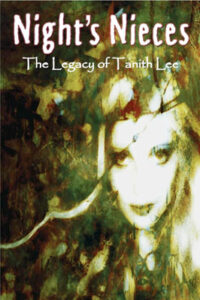
I have four works in this beautiful anthology, including poems and short stories. Here’s the blurb:
In the footsteps of the High Priestess of Fantasy… Tanith Lee – 1947-2015 – was a huge influence on fantasy literature, and a towering inspiration to a generation of writers, who were captivated by her iconic, poetic prose, her deft use of language, her surreal visions and her ground-breaking ideas.
Many successful authors claim that discovering the work of Tanith Lee encouraged them to write in the first place. In particular, she was instrumental in giving women writers the confidence to break the staid moulds of the genre – to be evocative, sensual and daring in their work, to smash boundaries.
Its title inspired by Tanith’s Flat Earth sequence of books, (in particular Night’s Master), Night’s Nieces is a collection of stories by female writers, who not only counted Tanith Lee as a close friend, but also as a mentor, a teacher and an inspiration. Tanith, having no children herself, considered these younger women to be her ‘nieces’ and offered her support to their writing. While the ‘nieces’ included in this book do not encompass all of Tanith’s close writer friends – for she had many – it amply provides a sample of her legacy.
Each ‘niece’ has written a short story inspired by Tanith’s work, as well as an accompanying article describing how Tanith influenced her career and sharing fond memories of her friendship. The book also includes previously unpublished photographs from Tanith’s life, as well as artwork by the authors.
Contributors include Storm Constantine, Cecilia Dart-Thornton, Vera Nazarian, Sarah Singleton, Kari Sperring, Sam Stone, Freda Warrington and Liz Williams. With an introduction by John Kaiine.
The joy of a rich vocabulary
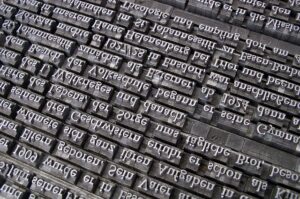
Why walk when you’re capable of dancing?
Why eat nothing but toast for every meal when you can enjoy a feast of diverse foods for free?
Like so many people, (such as Kate Burridge and Giles Brandreth ) I love words. We love their sound, the nuances of their meanings, their etymology, their power, and even the way they look written down. As a youngster I used to read the dictionary and thesaurus for fun. I love learning new words (in all languages) and increasing my vocabulary.
How is it helpful to learn more words?
Having a wide vocabulary is essential to effective communication, and it can have a lot of benefits both in personal and professional contexts. Here are some of the most important benefits of a wide vocabulary:
- Clear and effective communication: A wide vocabulary can help you express your thoughts and ideas more clearly and accurately. When you have a good command of words, you can choose the right words to convey your message with precision and avoid ambiguity. This is particularly important in professions that require clear communication such as teaching, public speaking, and writing.
- Improved comprehension: A wide vocabulary also makes it easier to understand what others are saying or writing. You can pick up on subtle nuances in language and understand complex concepts more easily. This can be particularly beneficial when reading academic texts or when participating in intellectual conversations.
- Enhanced creativity: A wide vocabulary can also help to enhance your creativity. When you have a large pool of words to draw from, you can express your ideas in unique and innovative ways. This can be particularly useful when writing creatively or when trying to come up with new ideas at work.
- Improved cognitive abilities: Studies have shown that having a wide vocabulary can also improve cognitive abilities, such as memory and critical thinking. Learning new words requires active engagement with the language and can help to stimulate the brain and keep it agile.
- Better job prospects: A wide vocabulary can be an asset in the workplace. It can make you a more effective communicator, improve your writing skills, and enhance your ability to understand complex texts. These skills are highly valued by employers, and can give you an edge in the job market.
It’s worth investing time and effort into learning new words and expanding your vocabulary. Reading, playing word games, and using new words in your writing and speech are all great ways to build your vocabulary and reap the benefits that come with it.
Jon English

Why I am writing a post about that amazingly talented, beautiful and genuinely nice man Jon English? Well, because of all of the above, because he’s one of the few Australian performers ever to successfully combine a career in music, television and stage, and because he unknowingly played a part in my life.
You can read about Jon’s life in Wikipedia and remember him on a Facebook page.
When I was a teenager I auditioned for a musical. Jon English was in charge of the auditions. I was starstruck. My singing voice came out sounding like a strangled squeak. I will always remember how kind he was to me. “We’re looking for a rock singer. You’d be best as a folk singer.” What a gentleman, not to crush my youthful hopes, as he could have done so easily!
I went on to sing in two folk bands.
Jon’s performances in Jesus Christ Superstar were electrifying. It’s a pity there isn’t a better quality video of them available online.
I would like to ask the universe in general two questions:
- Why hasn’t Jon English been inducted into the Australian Recording Industry Association (ARIA) Hall of Fame?
- And why wasn’t his rock musical “Paris” (based on the myth of the Trojan War) given the backing it deserved, to become a professional stage production as big as any hit by Andrew Lloyd Webber?
The album “Paris” was so good that it was nominated for two ARIA Awards, winning Best Original Soundtrack, Cast or Show Album. It was also nominated for Best Adult Contemporary Album.
So come on ARIA, give Jon the recognition he deserves!
She: A book that influenced many authors.
SHE by H Rider Haggard (full title “She: A History of Adventure” “is one of the foundational works of fantasy literature, published around the time of The Princess and the Goblin (1858) by George MacDonald, William Morris’ The Wood Beyond the World and The Well at the World’s End, and the short stories of Lord Dunsany.”*
“Several authors, including JRR Tolkien, Rudyard Kipling, Henry Miller, Graham Greene and Margaret Atwood, have acknowledging its importance to their own and others’ writing. With more than 83 million copies sold, the novel is one of the best-selling fictional works of all time and has been translated into 44 languages.” [Wikipedia]
The Leaves of Gold Press edition of SHE includes an introduction written by me. It is also the first edition to contain illustrations from not one but four acclaimed artists who were contemporaries of JRR Tolkien, and whose works he admired:
- Maurice Greiffenhagen
- Charles H.M. Kerr
- E. K. Johnson, and
- G. C. Wilmshurst.
“She” was first published in book form in 1887. The story is an enduring classic, more than a century old. It’s a fantasy adventure packed with action, mystery, wonder, supernatural marvels and beauty, along with violence and darkness. While it bears some of the now-discredited hallmarks of the era in which it was written, it remains an enthralling page-turner. Critics consider it one of the most influential novels in modern literature.
Refreshingly, considering 19th century social attitudes, the story features a strong woman with a complex personality as the central character. Haggard’s representation of womanhood has received both praise and criticism.
SHE is one of those powerful stories whose popularity endures for centuries. The story has been made into movies and radio dramas.
Tolkien and SHE

In common with every writer, Professor JRR Tolkien was influenced by many books. When he was growing up, he greatly enjoyed reading all the works of H. Rider Haggard. He stated in a 1966 interview, “I suppose as a boy SHE interested me as much as anything. . .”
Many interesting parallels can be drawn between “The Lord of the Rings” and SHE. Readers will find echoes of Galadriel and her mirror here, and arguably, even the literary progenitors of Frodo and The One Ring.
Tanith Lee and SHE

Tanith Lee’s superb science fantasy novel THE BIRTHGRAVE, first published in 1975, is also the first novel in The Birthgrave Trilogy. The story follows a nameless protagonist who awakens with amnesia. She travels across a fantastic, epic landscape on a quest to discover her past and her identity. The novel was nominated for the 1975 Nebula Award for best novel.
I was captivated by THE BIRTHGRAVE the moment I began to read it, and it remains one of the favourites on my bookshelves. On re-reading SHE, I began to see Haggard’s influence on Lee’s enchanting fantasy work. A volcano. An exotic, wild landscape. Ancient, ruined cities. Lost civilizations. A powerful, beautiful woman who is close to immortal. . .
Dart-Thornton and SHE

In turn, THE BIRTHGRAVE influenced my own writing. The beauty of Lee’s prose was a revelation to me, but more than that, I found the concept of someone who awakens with no memories, no past, no identity, deeply intriguing. That became the seed of THE BITTERBYNDE TRILOGY.
[Ref: Cornwell, Neil (1990). The Literary Fantastic: from Gothic to Postmodernism. New York: Harvester Wheatsheaf. ISBN 978-0-7450-0804-2. Also Clute, John (2002). Encyclopedia of Fantasy. New York: St Martin’s.]
Words can cast a spell
What is it about welsh?
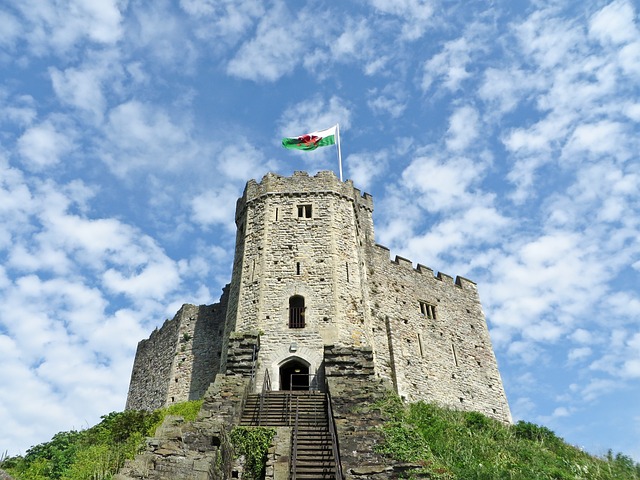
Warning: do not read any further unless you are interested in deeply geeky stuff.
Words. I’ve always been fascinated by them. It’s not just the meanings they convey, but the sound of words, and the way they look written down.
Certain languages have an added appeal for me because they sound amazing when spoken, they look mysterious and exciting when written down, and they are bafflingly unlike my own mother tongue – the language you, the reader, presumably knows also, if you’re able to decipher this post.
Such a language is Welsh. It’s “a Celtic language of the Brittonic subgroup that is native to the Welsh people,” says Wikipedia. “Welsh evolved from Common Brittonic, the Celtic language spoken by the ancient Celtic Britons.”
Up till now, the only languages I’ve been familiar with (aside from Pig Latin, Elvish and Klingon) are English, German, French, Italian, Spanish, and a smattering of Russian.
Language families
Google says there are 48 language families, and they are are at the root of all human languages.
Those I’ve mentioned above all descend from the ancient and widespread Indo-European language family.
The Indo-European family is divided into several branches, of which there are eight with languages still alive today and another nine that are now extinct.
English and German are descended from the Germanic branch, Russian from the Balto-Slavic, French, Italian and Spanish are from the Italic (they have another sub-group, called “Romance“) and Welsh from the Celtic.
The Celtic branch is very distinct. It’s divided into two sub-groups: the Goidelic (or Gaelic) languages and the Brythonic (or Brittonic) languages. I’m intrigued by both of these sub-groups but decided to focus on Welsh due to time constraints. (Oh and Wales has dragons, too, which is a bonus.)
J R R Tolkien and the Welsh language
It was listening to a Welsh song that inspired me to start learning the language. That, and the fact that my literary hero J R R Tolkien was also inspired by Welsh. As a boy, he used to see Welsh place-names painted on coal trucks from South Wales that clattered along on a railway line adjoining his childhood garden in King’s Heath, Birmingham.
I should have said Welsh has always attracted me. By its style and sound more than any other, ever though I first only saw it on coal trucks, I always wanted to know what it was about.
~ J R R Tolkien
The mystery and beauty of the Welsh written language inspired him to create his own languages. He, too, was spellbound by it. On an early train journey into Wales, he spotted the name “Ebbw” and ‘just couldn’t get over it. Not long after I started inventing my own languages.’”
The spell cast by the song
Back to that song, “Yma O Hyd” (translating as “Still Here”). It’s a nationalist song, filled with passion, opening with the drumming of an acoustic guitar and the molten silver notes of a harp. Then in comes the mellow voice of the song’s composer, Dafydd Iwan. I make it a rule to avoid commenting on politics, and it was not the meaning of the song that entranced me (I had no idea what it meant) but the beauty of the language and the melody. As far as I was concerned, the song could have been about anything or nothing. To me it was magical.
For a start, right there in the third line is the word “flynyddoedd”. Gob-smacking. What a word! Completely unpronounceable, obviously, though Dafydd was somehow managing to sing it with no problems. I was tempted never to translate this beauty into English, in case it lost its magic by meaning something mundane like “beige” or “carpet-slippers”, but eventually I did. To its credit, it means “years”. This is a concept that’s majestic enough to suit such a word.
Anyway, what’s with all the “d”s and “y”s in “flynyddoedd”? Not to mention all the “w”s that inundate the rest of the Welsh language? I wonder if it’s something to do with ancient writing systems, and rune-derived characters we’ve lost over the last few thousand flynyddoedd?
The missing letters of the alphabet
eth
The wonderful Youtuber Rob Words published a video called LOST LETTERS OF THE ALPHABET: 9 letters we stopped using. If English hadn’t dropped all those letters, we could be using them to write Welsh.
“dd” for example is just a pale replacement for “eth”. Eth (uppercase: Ð, lowercase: ð) was a letter used in Old English. The sound is the “th” sound in “those”, “these” and “they”. If we brought eth back we could write “flynyddoedd” as “flynyðoeð”. That would make it look even more Elvish and magical.
Barred U
The “Barred U” ʉ isn’t a missing rune, but it’s a symbol used in the International Phonetic Alphabet to indicate the sound “oo” as in “goose”. This would be very useful in writing Welsh, because currently the letter “w” is used to represent that sound.
On the other hand, using “w” for “oo” does increase the mystery and allure of the language. Take, for example, a word like “cwrw”. Written down, it looks impenetrable, esoteric, marvellous. It also sounds glorious, “cooroo”… the sound of the wind blowing through the boughs of pine trees at the edge of the ocean . . . cʉrʉ . . .
In fact the word simply means “beer”, which is nice, but a bit prosaic.
I vote we bring back the Old English runes wynn, Ƿ ƿ, thorn þ (the softer “th” sound in “thorn”) and eth ð.
Welsh vowels – some of the other mysteries
Youtuber Gwyneth Angharad teaches us about Welsh vowels. As well as pronouncing “w” as “oo”, you pronounce “u” as “i”.
“Y” is mostly pronounced like schwa, the a vowel sound denoted by the IPA symbol ⟨ə⟩. Gwyneth describes this as “the lazy sound you have at the beginning of ‘alive’ or ‘about’.” Depending on where it is in a word, “y” can also sound like “i”. . .
It’s not easy learning Welsh!
Some of my favourite Welsh words
If Tolkien wasn’t inspired by the Welsh word for “The Netherlands” I’d be very surprised. It sounds as if it comes straight from Middle-Earth: “yr Iseldiroedd” (or Iseldiroeð if you use “eth”). So much more attractive than the English version!
Another magnificently Tolkienesque Welsh word is “hiraeth”. This is one of those special words whose meaning actually matches the haunting melodiousness of its sound.
“Hiraeth,” says Wikipedia, “is a Welsh word that has no direct English translation. The University of Wales, Lampeter, likens it to a homesickness tinged with grief and sadness over the lost or departed, especially in the context of Wales and Welsh culture. It is a mixture of longing, yearning, nostalgia, wistfulness or an earnest desire for the Wales of the past.”
It sounds exactly like the “langothe” from the BITTERBYNDE trilogy.
Are there any languages that you particularly love for their sound and style?
Cecilia
Golden Hair

Photo by Gustavo Lacerda on Flickr angs school gustavo-lacerda-1
Available under Creative Commons Licence
“Katharine Briggs (8 November 1898 – 15 October 1980) was a British folklorist and writer, who wrote The Anatomy of Puck, the four-volume A Dictionary of British Folk-Tales in the English Language, and various other books on fairies and folklore. From 1969 to 1972, she was president of the Folklore Society, which established an award in her name to commemorate her life and work.” [Wikipedia]
Her book “A Dictionary of Fairies” has been a favourite of mine since childhood. I’ve read it again and again. I’ve loved it so much it started to fall apart and I had it re-bound. The book has since been published under the title, “An Encyclopedia of Fairies“.
Briggs was a passionate, accurate and thorough researcher. She had a PhD with a thesis on Folklore in seventeenth-century literature. She wrote many other books on fairies and folklore, as well as a number of children’s books. “A Dictionary of British Folk-Tales in the English Language: Part A: Folk Narratives (1970)” was re-published in three volumes in 2011 as Folk Tales of Britain, and is described by Philip Pullman in its introduction as the fullest and the most authoritative collection of British folktales that exists.
In 1969 Briggs was awarded the Doctorate in Literature, and made President of the Folklore Society, a post she held until 1972, and which named an award in her honour.
Briggs collected folk tales and fairy tales from people who had learned them, orally, from their forefathers. She found common threads, “types and motifs” within these tales, such as “Mortals as captives in Fairyland”, or “Tree spirits” or “Fairies steal”, or “Mortal not to thank fairy for gifts”. I use many of these motifs in my own work, which is inspired by British and Celtic folklore. One of them is “Golden hair”.
From Katharine Briggs’s “An Encyclopedia of Fairies”:
“GOLDEN HAIR. Some of the FAIRIES were golden-haired, as presumably were the TYLWYTH TEG, or Fair Family, many of the FAIRIES OF MEDIEVAL ROMANCES and the Irish fairies of the TIR NAN OG, but many of them were black-haired and brown-skinned.
“Fair or dark, however, they all set great store by golden hair in mortals. A golden-haired child was in far more danger of being stolen than a dark one. It was often a golden-haired girl who was allured away to be a FAIRY BRIDE, as EILIAN OF GARTH DORWEN was; sometimes, too, the fairies adopted girls of especial beauty, and above all golden-haired, as their special charges; and when they could not protect them they avenged their wrongs.
That said, there appear to be some disadvantages to having golden hair in the Real World!
“Blonde stereotypes are stereotypes of blonde-haired people. Sub-types of this stereotype include the “blonde bombshell” and the “dumb blonde”. Blondes are stereotyped as more desirable, but less intelligent than brunettes. There are many blonde jokes made on these premises. Although chiefly aimed at women, jokes of this style have also been aimed at similar stereotypes associated with men, such as the “dumb jock”, the “surfer dude” and “himbo”.
Wikipedia “Blonde stereotype”
Beautiful golden hair such as that which belongs to the young girl in Gustavo Lacerda’s photo may be the result of albinism, an inherited condition that leads to animals or people (of any race) having very light skin, hair, and eyes. People with albinism are often considered to have a unique beauty. Their hair may be white, auburn or golden.
WRITING TIP #5: The timing of inspiration
 Go With the Flow.
Go With the Flow.
I don’t know about other writers, but I find that inspiration can strike me at the most unexpected times.
These times are not entirely unpredictable – they’re usually periods when my mind is drifting; when I’m not thinking of anything in particular. That’s when inspiring, amazing, intriguing ideas will often bubble to the surface. If I sat down to “deliberately think”, this burst of creativity would probably not occur. It has to be spontaneous. And when inspiration hits, it feels like such a rush! And that is when, if at all possible, it’s best to put pen to paper.
When you do, pay no heed to spelling, grammar or punctuation – just write!
Walt Whitman, the great American poet, wrote:
The secret of it all is to write in the gush, the throb, the flood, of the moment—to put things down without deliberation—without worrying about their style—without waiting for a fit time or place. I always worked that way. I took the first scrap of paper, the first doorstep, the first desk, and wrote—wrote, wrote. … By writing at the instant the very heartbeat of life is caught.
Inspiration and Discipline

Write by hand
That said, it would be impossible (for me) to write a whole book if I only wrote when inspired. The inspired writing provides the basic “clay” from which the “sculpture” can be formed. It’s disciplined writing that finesses that basic clay. Disciplined writing takes place when that bright glow of inspiration has faded and you need to make sense of it all, insert “bridges” between scenes, get rid of any cliches that may have crept in, add some description, fix the spelling, grammar and punctuation, and so on.
There’s an interesting article that touches on this topic at The Write Practice, here. It’s called “Writing Inspiration: Do You Really Need It to Write?” by



 Go With the Flow.
Go With the Flow.